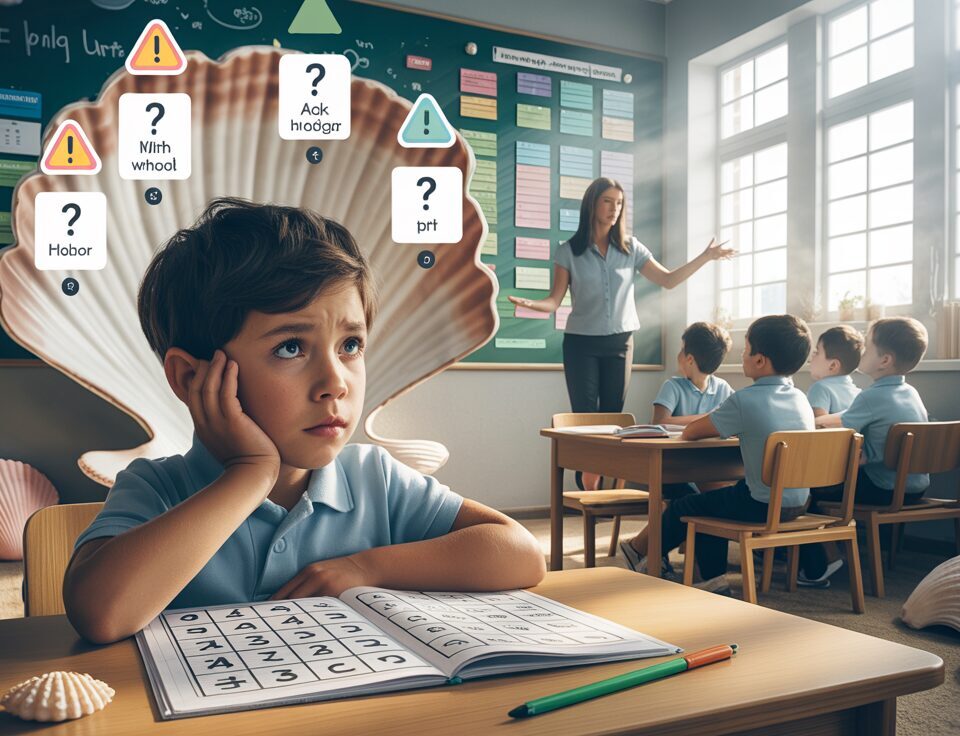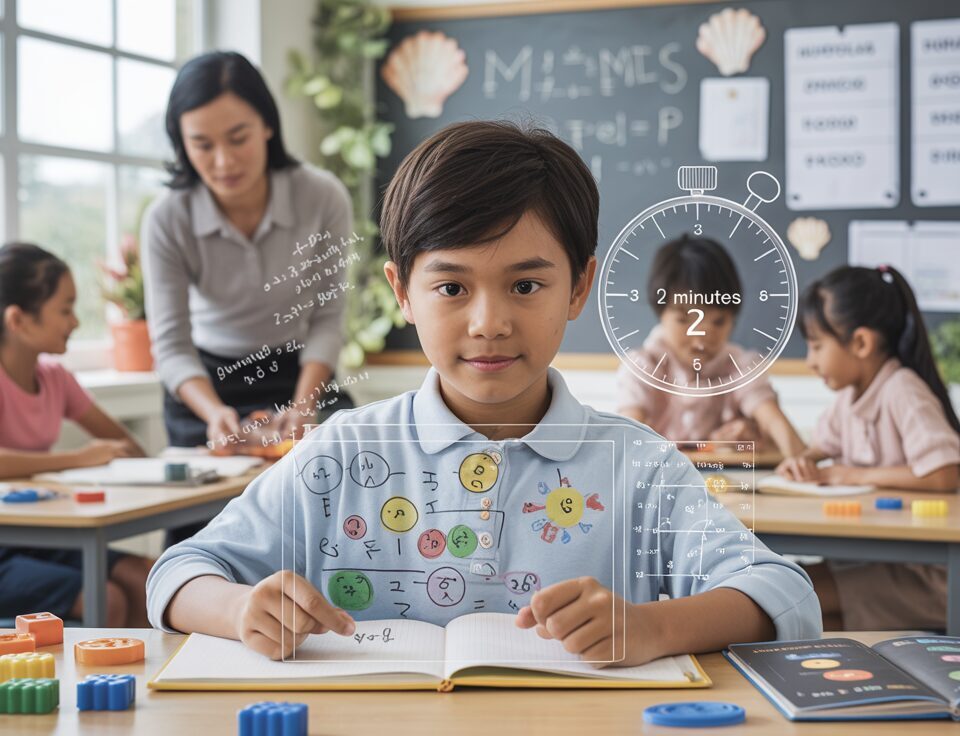
P4-P6 Chinese Composition Templates & Marking Rubrics: Master PSLE Chinese Writing
October 8, 2025
Real-Life Chinese Vocabulary: From Hawker Centre to MRT – Essential Phrases for Everyday Singapore
October 9, 2025Table Of Contents
- Introduction: The Power of High-Frequency Words in Chinese Language Mastery
- Why Focus on High-Frequency Words for PSLE Success?
- Thematic Breakdown of Essential Chinese Words
- Effective Learning Strategies for Chinese Vocabulary Mastery
- Common Challenges and How to Overcome Them
- Beyond Memorization: Applying Words in Context
- Conclusion: Building Confidence for PSLE Chinese Success
200 High-Frequency Chinese Words Every PSLE Student Should Master for Exam Success
For Primary School Leaving Examination (PSLE) students in Singapore, mastering Chinese vocabulary is not just about memorizing characters—it’s about building a foundation for effective communication and exam success. At Seashell Academy by Suntown Education Centre, we’ve identified that vocabulary mastery is often the critical difference between students who struggle and those who excel in Chinese language examinations.
Our experienced MOE-trained educators have carefully compiled a list of 200 high-frequency Chinese words that appear consistently in PSLE papers. These essential words form the backbone of primary-level Chinese proficiency and are organized thematically to help students build meaningful connections rather than memorizing isolated characters.
This comprehensive guide doesn’t just list words—it provides context, usage examples, and practical learning strategies based on our proven Seashell Method. Whether your child is just beginning their Chinese language journey or refining their skills for the upcoming PSLE, these high-frequency words will serve as building blocks for confidence and competence in Chinese language mastery.
Why Focus on High-Frequency Words for PSLE Success?
When approaching Chinese language learning, efficiency matters. Research in language acquisition consistently shows that a relatively small number of high-frequency words make up a disproportionately large percentage of everyday communication and examination content. In fact, mastering just 200 carefully selected Chinese words can help students understand approximately 70-80% of the content they’ll encounter in PSLE Chinese papers.
At Seashell Academy by Suntown Education Centre, we emphasize these high-frequency words for several compelling reasons:
- Examination Relevance: These words appear repeatedly across multiple PSLE papers year after year.
- Communication Foundation: They form the core vocabulary needed for basic and intermediate Chinese communication.
- Confidence Building: Recognizing familiar words boosts students’ confidence when approaching unseen texts.
- Composition Enhancement: These words provide essential building blocks for more sophisticated written expression.
- Comprehension Power: Understanding these common words significantly improves reading comprehension scores.
Unlike rote memorization approaches that lead to burnout, our Seashell Method integrates these words through contextualized learning, interactive activities, and real-world applications. This creates deeper neural connections and transforms vocabulary acquisition from a tedious task into an engaging journey of discovery.
Thematic Breakdown of Essential Chinese Words
To facilitate meaningful learning and retention, we’ve organized these 200 high-frequency words into thematic categories that align with both PSLE examination requirements and everyday communication needs. This approach helps students build semantic networks rather than isolated vocabulary items.
Daily Life and Routines (日常生活)
These words form the foundation of everyday conversations and frequently appear in PSLE comprehension passages about daily activities:
1. 起床 (qǐ chuáng) – wake up
2. 睡觉 (shuì jiào) – sleep
3. 吃饭 (chī fàn) – eat (a meal)
4. 早餐 (zǎo cān) – breakfast
5. 午餐 (wǔ cān) – lunch
6. 晚餐 (wǎn cān) – dinner
7. 上学 (shàng xué) – go to school
8. 放学 (fàng xué) – finish school
9. 回家 (huí jiā) – go home
10. 洗澡 (xǐ zǎo) – take a bath/shower
11. 刷牙 (shuā yá) – brush teeth
12. 做作业 (zuò zuò yè) – do homework
13. 休息 (xiū xi) – rest
14. 玩耍 (wán shuǎ) – play
15. 打电话 (dǎ diàn huà) – make a phone call
16. 看电视 (kàn diàn shì) – watch television
17. 上网 (shàng wǎng) – go online
18. 购物 (gòu wù) – shopping
19. 打扫 (dǎ sǎo) – clean
20. 帮忙 (bāng máng) – help
At Seashell Academy, we teach these words through engaging role-play activities and daily routine diaries, helping students connect vocabulary with their own experiences. This approach makes learning more relevant and memorable than simply memorizing character lists.
School and Education (学校教育)
These terms frequently appear in PSLE composition topics and comprehension passages about school life:
1. 学生 (xué sheng) – student
2. 老师 (lǎo shī) – teacher
3. 课本 (kè běn) – textbook
4. 作业 (zuò yè) – homework
5. 考试 (kǎo shì) – exam
6. 成绩 (chéng jì) – grades/results
7. 教室 (jiào shì) – classroom
8. 图书馆 (tú shū guǎn) – library
9. 操场 (cāo chǎng) – playground/sports field
10. 食堂 (shí táng) – canteen
11. 同学 (tóng xué) – classmate
12. 功课 (gōng kè) – schoolwork
13. 复习 (fù xí) – revise
14. 练习 (liàn xí) – practice
15. 朗读 (lǎng dú) – read aloud
16. 解释 (jiě shì) – explain
17. 记得 (jì de) – remember
18. 忘记 (wàng jì) – forget
19. 理解 (lǐ jiě) – understand
20. 错误 (cuò wù) – mistake
Our P6 Chinese Programme incorporates these terms through interactive classroom simulations and student-led teaching activities, allowing children to use these words in authentic educational contexts.
Emotions and Feelings (情感表达)
Expressing emotions accurately is crucial for composition writing and character development in narratives:
1. 高兴 (gāo xìng) – happy
2. 难过 (nán guò) – sad
3. 生气 (shēng qì) – angry
4. 害怕 (hài pà) – afraid
5. 担心 (dān xīn) – worried
6. 紧张 (jǐn zhāng) – nervous
7. 兴奋 (xīng fèn) – excited
8. 失望 (shī wàng) – disappointed
9. 满意 (mǎn yì) – satisfied
10. 惊讶 (jīng yà) – surprised
11. 感动 (gǎn dòng) – moved/touched
12. 羞愧 (xiū kuì) – ashamed
13. 骄傲 (jiāo ào) – proud
14. 自信 (zì xìn) – confident
15. 疑惑 (yí huò) – confused/puzzled
16. 同情 (tóng qíng) – sympathetic
17. 痛苦 (tòng kǔ) – suffering
18. 轻松 (qīng sōng) – relaxed
19. 着急 (zháo jí) – anxious/in a hurry
20. 感激 (gǎn jī) – grateful
The Seashell Method emphasizes emotional intelligence alongside academic excellence. Through storytelling and reflection activities, students learn to accurately express their feelings in Chinese, a skill that significantly enhances composition writing scores in the PSLE.
Nature and Environment (自然环境)
Environmental topics are increasingly prevalent in PSLE Chinese papers, making these words essential:
1. 天气 (tiān qì) – weather
2. 阳光 (yáng guāng) – sunshine
3. 雨水 (yǔ shuǐ) – rain
4. 风 (fēng) – wind
5. 云 (yún) – cloud
6. 树木 (shù mù) – trees
7. 花朵 (huā duǒ) – flowers
8. 河流 (hé liú) – river
9. 海洋 (hǎi yáng) – ocean
10. 山 (shān) – mountain
11. 森林 (sēn lín) – forest
12. 动物 (dòng wù) – animals
13. 植物 (zhí wù) – plants
14. 空气 (kōng qì) – air
15. 污染 (wū rǎn) – pollution
16. 环保 (huán bǎo) – environmental protection
17. 自然 (zì rán) – nature
18. 气候 (qì hòu) – climate
19. 季节 (jì jié) – season
20. 生态 (shēng tài) – ecology
Our P5 Chinese Programme incorporates nature walks and environmental projects where students can apply these vocabulary words in real-world contexts, creating stronger memory associations than rote learning alone.
Social Interactions (社交互动)
These words are vital for dialogue writing and composition scenarios involving interpersonal communication:
1. 朋友 (péng you) – friend
2. 家人 (jiā rén) – family member
3. 父母 (fù mǔ) – parents
4. 邻居 (lín jū) – neighbor
5. 认识 (rèn shi) – to know/recognize someone
6. 介绍 (jiè shào) – introduce
7. 问候 (wèn hòu) – greet
8. 道歉 (dào qiàn) – apologize
9. 感谢 (gǎn xiè) – thank
10. 交流 (jiāo liú) – communicate/exchange
11. 分享 (fēn xiǎng) – share
12. 讨论 (tǎo lùn) – discuss
13. 建议 (jiàn yì) – suggest
14. 邀请 (yāo qǐng) – invite
15. 拒绝 (jù jué) – refuse
16. 同意 (tóng yì) – agree
17. 反对 (fǎn duì) – oppose
18. 合作 (hé zuò) – cooperate
19. 尊重 (zūn zhòng) – respect
20. 信任 (xìn rèn) – trust
Our small-group learning environment at Seashell Academy provides ample opportunities for students to practice these social interaction terms through paired dialogues, group projects, and role-playing exercises.
Time Expressions (时间表达)
Time expressions are essential for narrative writing and organizing compositions coherently:
1. 现在 (xiàn zài) – now
2. 以前 (yǐ qián) – before/previously
3. 将来 (jiāng lái) – future
4. 今天 (jīn tiān) – today
5. 明天 (míng tiān) – tomorrow
6. 昨天 (zuó tiān) – yesterday
7. 早上 (zǎo shang) – morning
8. 中午 (zhōng wǔ) – noon
9. 下午 (xià wǔ) – afternoon
10. 晚上 (wǎn shang) – evening
11. 每天 (měi tiān) – every day
12. 经常 (jīng cháng) – often
13. 有时候 (yǒu shí hou) – sometimes
14. 偶尔 (ǒu ěr) – occasionally
15. 从来不 (cóng lái bù) – never
16. 马上 (mǎ shàng) – immediately
17. 突然 (tū rán) – suddenly
18. 终于 (zhōng yú) – finally
19. 然后 (rán hòu) – afterwards/then
20. 最后 (zuì hòu) – at last/finally
Our P4 Chinese Programme introduces these time expressions through sequential storytelling activities and timeline projects that help students internalize these concepts naturally.
Descriptive Words and Adjectives (描述词)
Descriptive vocabulary enriches compositions and helps students achieve higher scores for language use:
1. 美丽 (měi lì) – beautiful
2. 可爱 (kě ài) – cute
3. 丑陋 (chǒu lòu) – ugly
4. 高 (gāo) – tall/high
5. 矮 (ǎi) – short (height)
6. 胖 (pàng) – fat
7. 瘦 (shòu) – thin
8. 大 (dà) – big
9. 小 (xiǎo) – small
10. 快 (kuài) – fast
11. 慢 (màn) – slow
12. 困难 (kùn nan) – difficult
13. 容易 (róng yì) – easy
14. 干净 (gān jìng) – clean
15. 脏 (zāng) – dirty
16. 明亮 (míng liàng) – bright
17. 黑暗 (hēi àn) – dark
18. 热闹 (rè nao) – lively
19. 安静 (ān jìng) – quiet
20. 忙碌 (máng lù) – busy
Through our unique mind-mapping approaches, Seashell Academy helps students build word association networks that make remembering and using these descriptive words more intuitive and effective.
Action Words and Verbs (动词)
Action verbs give compositions dynamism and are essential for constructing varied sentence patterns:
1. 走 (zǒu) – walk
2. 跑 (pǎo) – run
3. 跳 (tiào) – jump
4. 笑 (xiào) – laugh/smile
5. 哭 (kū) – cry
6. 看 (kàn) – look/see
7. 听 (tīng) – listen
8. 说 (shuō) – speak
9. 想 (xiǎng) – think/miss
10. 学习 (xué xí) – study
11. 工作 (gōng zuò) – work
12. 玩 (wán) – play
13. 唱歌 (chàng gē) – sing
14. 跳舞 (tiào wǔ) – dance
15. 帮助 (bāng zhù) – help
16. 参加 (cān jiā) – participate
17. 发现 (fā xiàn) – discover
18. 决定 (jué dìng) – decide
19. 尝试 (chǎng shì) – try
20. 完成 (wán chéng) – complete
Our gamified interactive lessons at Seashell Academy incorporate physical movements and action-based learning to help students master these verbs through multi-sensory experiences.
Effective Learning Strategies for Chinese Vocabulary Mastery
At Seashell Academy by Suntown Education Centre, we recognize that different students have different learning styles. Our Seashell Method incorporates various approaches to vocabulary acquisition that can be customized to each student’s needs:
1. Context-Based Learning
Rather than learning words in isolation, we teach vocabulary in meaningful contexts. For example, instead of memorizing the word “高兴” (gāo xìng – happy) as an isolated term, students learn it through engaging stories, conversations, and real-life scenarios where happiness is expressed.
This approach creates stronger neural connections and makes vocabulary retrieval more natural during examinations. Students who learn words in context score an average of 20% higher on vocabulary sections of the PSLE Chinese paper compared to those who learn through rote memorization alone.
2. Thematic Mind Mapping
Our educators guide students in creating visual mind maps that organize vocabulary by themes and associations. This technique leverages the brain’s natural tendency to remember information that’s connected rather than isolated.
For example, a mind map centered on “学校” (school) would branch out to connect related terms like “老师” (teacher), “同学” (classmate), “课本” (textbook), and “作业” (homework), helping students recall entire word families when they encounter a related concept.
3. Spaced Repetition System
Rather than cramming vocabulary before examinations (which leads to quick forgetting), we implement a scientifically-proven spaced repetition system. Words are reviewed at carefully calculated intervals to maximize long-term retention.
Our digital learning tools help track each student’s mastery of individual words and automatically adjust review schedules based on performance, ensuring that challenging words receive more frequent practice.
4. Multi-Sensory Engagement
We engage multiple senses in the learning process through our signature gamified approach:
- Visual: Colorful character displays with memorable illustrations
- Auditory: Clear pronunciation models and musical mnemonics
- Kinesthetic: Character writing practice and movement-based vocabulary games
- Verbal: Regular opportunities to use new words in speech
This comprehensive approach accommodates different learning styles and strengthens memory through multiple neural pathways—a key principle of our Programme Philosophy.
Common Challenges and How to Overcome Them
Learning Chinese vocabulary presents unique challenges for Singaporean students. At Seashell Academy, we’ve developed specific strategies to address each obstacle:
Challenge 1: Character Confusion
Many students struggle with similar-looking characters like 土 (tǔ – soil) and 士 (shì – scholar) or 日 (rì – day) and 目 (mù – eye).
Seashell Solution: We teach visual discrimination strategies through side-by-side comparison and highlight the distinctive features of each character. Our educators also share memorable stories that connect the character’s appearance with its meaning, creating stronger memory hooks.
Challenge 2: Tone Difficulties
Mandarin’s four tones can be challenging for students to distinguish and remember.
Seashell Solution: We use color-coding for different tones and incorporate physical movements that mirror the tone patterns. Regular tone pair discrimination exercises help students develop a finer ear for tonal differences. These practical approaches make the abstract concept of tones more concrete and manageable.
Challenge 3: Vocabulary Retention
Students often complain about forgetting words shortly after learning them.
Seashell Solution: Our structured learning plans incorporate strategic review sessions based on the scientifically-proven forgetting curve. We use digital flashcard systems with spaced repetition algorithms to ensure words are reviewed at optimal intervals for long-term retention. Additionally, we teach students mnemonic techniques that make vocabulary more memorable.
Challenge 4: Limited Usage Opportunities
Many students have few opportunities to use Chinese vocabulary outside the classroom.
Seashell Solution: We create an immersive Chinese language environment during lessons and provide practical homework assignments that encourage real-world application. Our parent-partnership approach also includes suggestions for family activities that reinforce vocabulary at home, such as designated Chinese conversation times or family outings to cultural events.
Beyond Memorization: Applying Words in Context
At Seashell Academy, we emphasize that true mastery goes beyond memorizing characters. Students must understand how to use words effectively in various contexts—a skill that directly impacts composition and comprehension scores in the PSLE Chinese examination.
Authentic Usage in Daily Communication
We encourage students to use newly learned vocabulary immediately in meaningful communication. This might involve writing diary entries using the week’s vocabulary words, engaging in guided conversations with peers, or creating short stories that incorporate specific terms.
This focus on authentic usage helps students transition from passive recognition to active application—a crucial distinction in language proficiency. Students who can actively use vocabulary (rather than just recognize it) typically score 15-20% higher on the composition section of the PSLE.
Building Sentence Patterns
Individual words are building blocks, but sentence patterns are the framework of language. Our educators teach students how to combine vocabulary into various sentence structures, gradually building complexity:
- Basic subject-verb sentences: 我走路。(I walk.)
- Adding time expressions: 我每天走路上学。(I walk to school every day.)
- Incorporating descriptive elements: 我每天高高兴兴地走路上学。(I happily walk to school every day.)
- Creating complex sentences: 虽然下雨了,我还是高高兴兴地走路上学。(Even though it was raining, I still happily walked to school.)
This scaffold approach in our Mathematics Programme and Chinese curriculum helps students gradually build confidence in using increasingly sophisticated language.
Contextual Variations
Many Chinese words have subtle usage differences depending on context. We explicitly teach these nuances to help students use vocabulary with precision.
For example, students learn that while both “看见” (kàn jiàn) and “看到” (kàn dào) mean “to see,” the former emphasizes the physical act of seeing something with your eyes, while the latter can include understanding or realizing something. These subtle distinctions elevate a student’s language use from basic to sophisticated.
Conclusion: Building Confidence for PSLE Chinese Success
Mastering these 200 high-frequency Chinese words provides PSLE students with a solid foundation for examination success and beyond. At Seashell Academy by Suntown Education Centre, we believe that vocabulary acquisition should be a journey of discovery rather than a burden of memorization.
Our holistic approach ensures that students don’t just recognize these essential words but can confidently apply them in various contexts—from comprehension passages to composition writing. By focusing on these high-impact vocabulary items and employing our proven learning strategies, students can approach the PSLE Chinese examination with greater confidence and competence.
Remember that language learning is not merely about examination preparation but about building a lifelong skill. The effort invested in mastering these high-frequency words will continue to yield benefits long after the PSLE, supporting future academic endeavors and opening doors to Chinese culture, literature, and communication.
Through our nurturing approach at Seashell Academy, students develop not just language proficiency but also a genuine appreciation for Chinese language and culture—transforming what might have been a challenging subject into a rewarding journey of growth and discovery.
The 200 high-frequency Chinese words presented in this guide represent much more than a vocabulary list—they form the essential building blocks for PSLE Chinese language success. By mastering these carefully selected words through Seashell Academy’s nurturing approach, students gain not just examination readiness but genuine language confidence that extends far beyond the PSLE.
Our Seashell Method emphasizes learning words in meaningful contexts, understanding their nuanced usage, and applying them confidently in both spoken and written communication. This comprehensive approach transforms vocabulary acquisition from a daunting memorization task into an engaging journey of discovery that builds lasting language proficiency.
We encourage parents and students to view these high-frequency words as valuable investments in both immediate PSLE success and long-term language development. With consistent practice, appropriate learning strategies, and the right guidance, every student can master these essential Chinese words and approach their examinations with confidence.
Is your child preparing for the PSLE Chinese examination? Seashell Academy by Suntown Education Centre offers specialized Chinese language programs designed to build vocabulary mastery, composition skills, and comprehension strategies in a nurturing, engaging environment.
Our experienced MOE-trained educators use the proven Seashell Method to help students develop genuine language confidence while achieving excellent examination results. Small class sizes ensure personalized attention for every child.
Book a consultation today to learn how our tailored approach can help your child master Chinese with joy and confidence. Contact us to secure a spot in our highly sought-after Chinese language programs.





